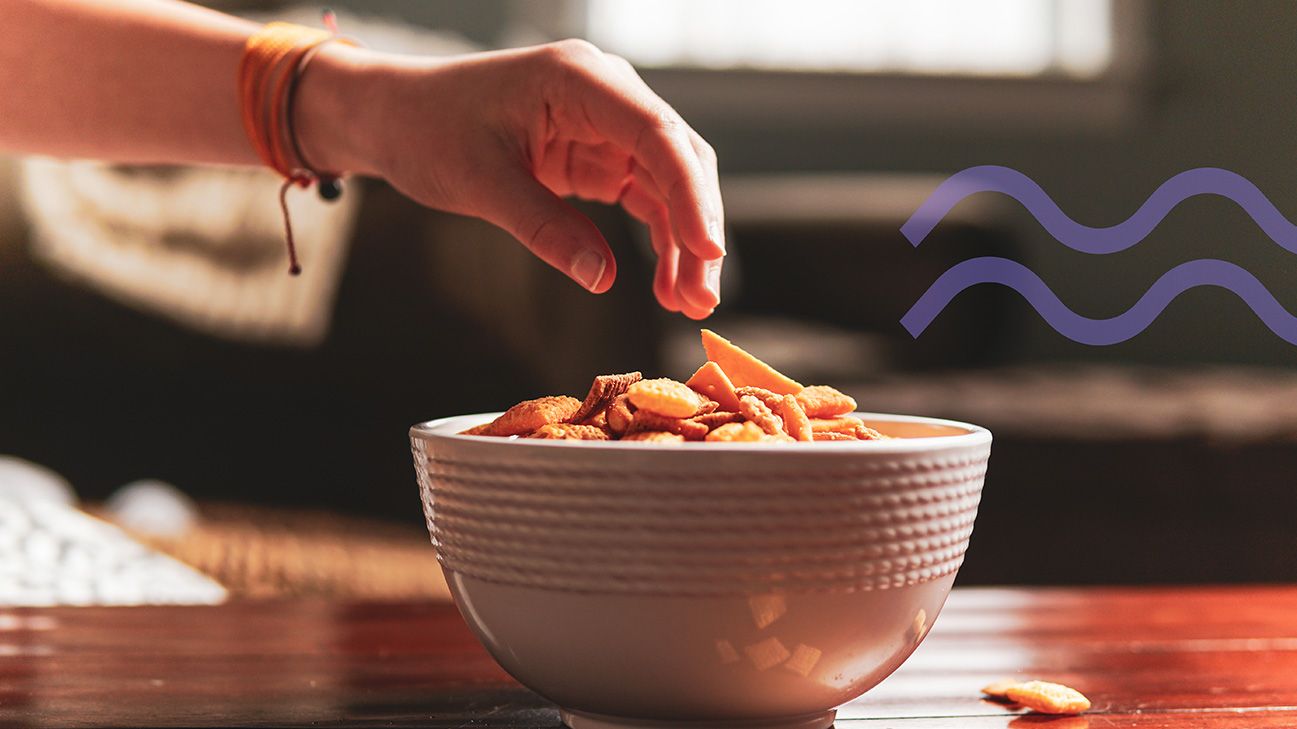I Developed Food Anxiety Because of My IBD
June 28, 2023
Content created for the Bezzy community and sponsored by our partners. Learn More

Photography by 5m3photos/Getty Images
Avoidant restrictive food intake disorder — aka “fear of food” — made it all but impossible to eat outside my home.
Crohn’s disease, one type of inflammatory bowel disease (IBD), is a lifelong condition that often causes severe pain in the gastrointestinal tract.
While food is one of the many factors that can cause a flare, which foods will cause pain and inflammation can sometimes be hard to pinpoint. There’s no single diet doctors can point to as safe for all people with IBD — so we’re often left to figure out for ourselves via trial and error to find which foods we can eat without causing or exacerbating pain.


What does IBD do to your relationship with food?
I’ve lived with Crohn’s disease for over 13 years. During my worst flares, my relationship with food really suffered. When eating causes you pain, it’s not uncommon — or illogical — to become afraid to eat.
It should come as no surprise then that a 2020 study found that 13% of participants with IBD met the diagnostic criteria for an eating disorder. More research is necessary, but many people with IBD report distress when it comes to deciding what to eat.
Most people are familiar with eating disorders like anorexia and bulimia, but fewer are well-versed on ARFID: avoidant restrictive food intake disorder, less formally known as a fear of food.
Unlike anorexia and bulimia, ARFID doesn’t typically come with the hallmark body dysmorphia associated with eating disorders. Instead, people often develop ARFID after a traumatic experience around food — something people with IBD are hard pressed to avoid.
Only a doctor or therapist can tell you for sure if what you’re dealing with is general anxiety around food, or something more serious, like ARFID. But whether you’ve been formally diagnosed with ARFID or not, issues with fear and anxiety around food are all too common in the IBD world.
My experience with food anxiety
2016 marked one of the worst and longest flares of my life. The only foods I could eat that didn’t result in immense pain were white bread, fish, eggs, and potatoes. I wish I were exaggerating when I say that was pretty much the whole list.
Food went from something I once loved to something I had to be wary of. One stray ingredient — like bacon in what I’d thought was potato soup — could change my entire day, rendering me unable to work or even get up off the bathroom floor.
Meat, spice, fat, and acid all became things my body would not tolerate. It became difficult to eat outside of the house for fear I’d accidentally be served an ingredient I couldn’t eat, or that I’d be stranded a long cab ride from home, doubled over in pain.
Food went from something I once loved to something I had to be wary of. One stray ingredient could change my entire day.
After a year of steroids and a new biologic medication, I was starting to feel a lot better — but I couldn’t shake my anxiety around food and eating, especially in public and around other people. I knew I was no longer as sick as I had been, but the trauma of the pain I’d lived through in the past wasn’t easy to shake.
A chronically complicated relationship with food
I wish this was the part where I told you I had a major breakthrough that’s solved my food anxiety, but I haven’t.
Much like my Crohn’s disease, and my regular anxiety, this issue seems to be chronic. But thanks to some good therapists and open conversations with other friends living with IBD, I no longer live in constant fear.
Yes, I check every menu online before I agree to dinner with friends. Yes, I like to be in control of when and what my next meal is, even when that doesn’t lend itself to a very fun and breezy vibe. Yes, I consider bathroom access when planning a hike or day trip.
But I’ve found coping mechanisms, through therapy, that mean my fear of food doesn’t stop me from eating, or going out with friends, or going on that hike. I just have to be smart about my bathroom access needs, and I have to advocate for myself when it comes to my dietary restrictions. I have to make smart choices about what I know to be my trigger foods, but more importantly than that, I need to not beat myself up when I am in pain, and know that I didn’t cause my pain by eating.
The takeaway
Disordered eating falls on a spectrum. Some people live with severe eating disorders that require immediate medical intervention. If you know someone in need of help, you can find resources through the National Eating Disorders Association.
But for the millions of people living with other types of disordered eating that can be harder to spot, like ARFID, support is also critical. Untreated, ARFID can cause weight loss, anemia, and more.
Doctors, support groups, and individual therapy have all been helpful parts of tackling my food anxiety, but it’s a long-term process of coming to terms with healthy ways to ingest food in a way that is best for my body.
Medically reviewed on June 28, 2023
3 Sources


Like the story? React, bookmark, or share below:
Have thoughts or suggestions about this article? Email us at article-feedback@bezzy.com.
About the author